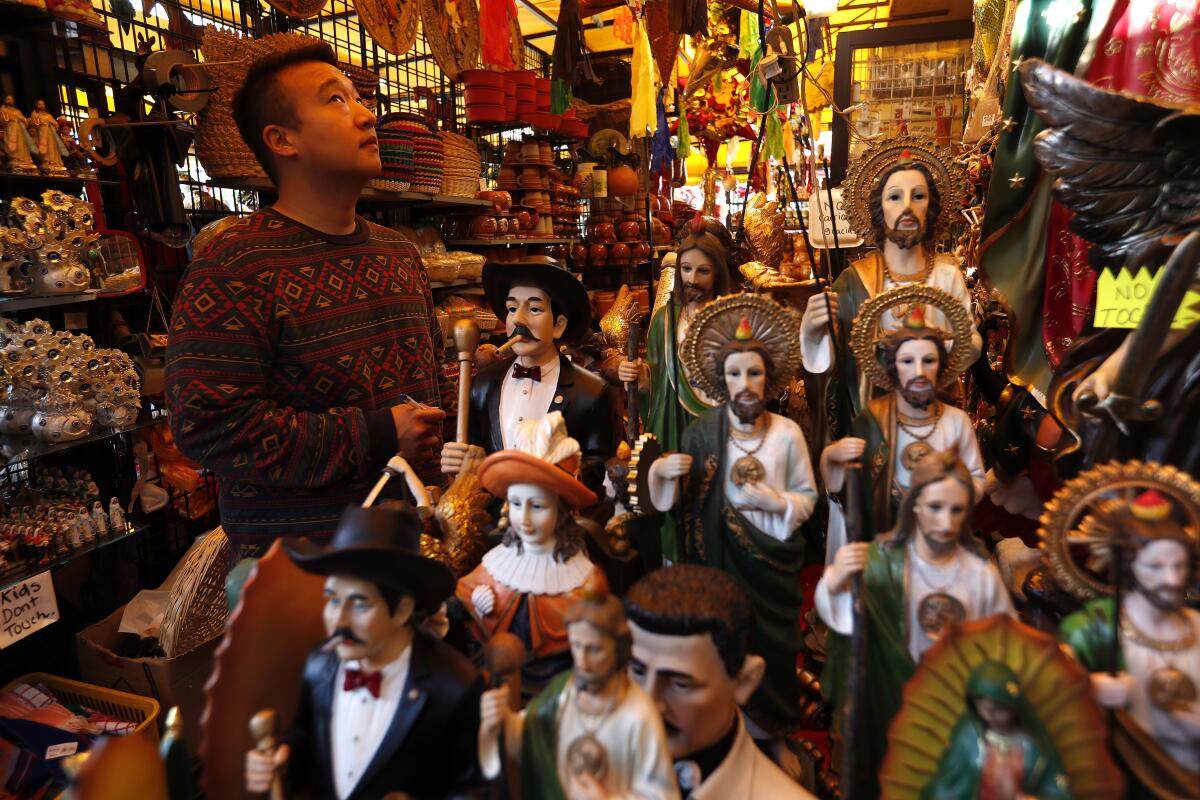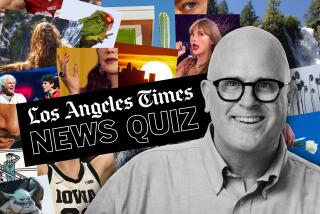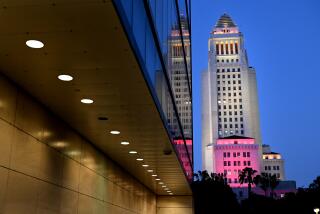What I learned in my first year as an L.A. Times columnist

At the end of my first year as a columnist for the L.A. Times, I find myself thinking about what I’ve achieved, and what I haven’t.
I began this year with a lofty goal. I wanted to tell the stories of all of the communities and cultures that make up Los Angeles, at least all the ones that get left out. I wanted to articulate a version of the city that had all those voices in it. But I’m just one writer, who can only speak two languages, Mandarin and English, and I didn’t achieve as much as I’d hoped.
I tried to report stories about swap meets and quinceañeras, but found myself frustrated with my inability to speak Spanish. I tried to pitch stories about black, Jewish and Iranian people, among many others, only to find that I did not know enough about those communities to understand what a good story was.
And confronting the responsibilities of such a large platform has reordered and changed my priorities. I’ve had to do a lot of learning on the job. I haven’t always been successful, but I hope I’ve at least been interesting.
Here are a few takeaways I wanted to share:
Los Angeles is a long battle between fantasy and reality.
In each era of the city, profiteers conspired to sell a vision of Los Angeles crafted to maximize economic or political gain, and that manufactured story has always obscured the stories of the people actually here. Boosters, tourism boards, politicians and developers marketed the city variously as a Mediterranean Spanish fantasy, a healthy, natural paradise, the anti-East Coast, the city of the future and a global city.
That battle between fantasy and reality continues today, but there is no easy villain to point the finger at. The fantasies obscuring the real city today aren’t created by a few profiteers — they are our own, posted to our feeds, beamed to our smartphones, hinted at in Instagram backdrops and embedded in the very way we talk about and move through the city.
The smartphone is a more powerful narrative distortion lens than any Hollywood narrative. Yelp’s algorithms show us where to eat. Facebook‘s, Instagram‘s and Twitter’s algorithms show us what’s important, what’s interesting and what’s noteworthy. But an algorithmic view of the city is woefully incomplete, and it’s a fantasy, like all the others.
We all have a powerful need to feel good about ourselves, but our good intentions can blind us.
In writing about ethnic communities, I’ve had to wrestle a lot with the issue of gentrification. And I’ve found that in a gentrifying neighborhood, few can accept that they are connected to gentrification.
The developer, after all, is just maximizing value and bringing investment to an area as respectfully as possible. The real estate agent is just helping people realize their home-owning dreams. The coffee shop, bar, or hip new restaurant owner is just trying to run a business. The longtime resident protesting the new businesses is just defending their community. The new resident is just trying to find a place they can afford that’s close to work.
But if everyone has good intentions, then they aren’t worth very much. And focusing on your own good intentions can blind you to injustice that’s happening right in front of you.
The need to feel morally upright is a natural human tendency, but in Los Angeles, it has also been a powerful historic force. In histories of Los Angeles, one important precursor to injustice is that the perpetrators must feel good about what they’re doing.
When city leaders evicted and demolished the homes of the working poor in Bunker Hill to make room for new development in the 1930s, it was widely lauded as “revitalization.” When Japanese Americans were forced into incarceration camps during World War II, The Times ran stories focusing on how new and well-appointed the camps were. When Los Angeles County Supervisor Frank. L. Shaw announced a plan to deport Filipinos on public relief rolls in the 1930s, a Times article claimed that Filipinos returning to the Philippines would be greeted with brass bands and parades.
Good intentions are good, but the truth matters more.
Everything is everywhere.
A few weeks ago, I was in Japan, underneath Tokyo Station, preparing to down a bowl of ramen when I spotted a location of Piehole, the pie restaurant I’ve only ever seen in downtown Los Angeles. I was amused, but I also felt a bit alarmed.
The internet is fraying the borders of geography. Porto’s is in West Covina now. Din Tai Fung is in Glendale. Cracker Barrel, which I thought I had left behind forever in Tennessee, has locations in Victorville and Rialto. Halal Guys is in Koreatown. Shake Shack is in West Hollywood. What’s next - In-N-Out in Manhattan?
Our economy conspires to give you what you most want, where you most want to live. It turns our geography into a commodity. And it’s starting to feel like we’re headed toward a future where everything is the same, everywhere.
But what I’ve also learned is that our readers crave a connection to the city’s geography, even if the natural arc of their daily lives doesn’t provide it. And that’s why you should subscribe to a newspaper. It’s the last and best news source that is indelibly bound to the geography of the real world.
There are many mainstreams, not just one.
Sometimes I think of the newsstand at Pann’s, a diner on La Cienega that I always drive by on my way to work. There are seven newspapers there: The L.A. News Observer, Pace News, the Los Angeles Wave, L.A. Focus, Our Weekly, Inglewood Today and Inglewood School News.
They’re local newspapers that tell stories that matter to people in the southern part of the city. And though I’ve been going there for five years, I’ve never seen the Los Angeles Times there.
For me, Pann’s newsstand is an important reality check. It’s a reminder that the stories on the covers of the newspapers in this city are different no matter where you go.
Even though I’ve struggled, I think my goal was the correct one. The most truthful perspective is one that acknowledges the many mainstreams that exist in this city. Writing about Los Angeles means wrestling with the city’s kaleidoscopic diversity and variety - even if you fail.
For my part, I promise to keep trying.
More to Read
Start your day right
Sign up for Essential California for news, features and recommendations from the L.A. Times and beyond in your inbox six days a week.
You may occasionally receive promotional content from the Los Angeles Times.







